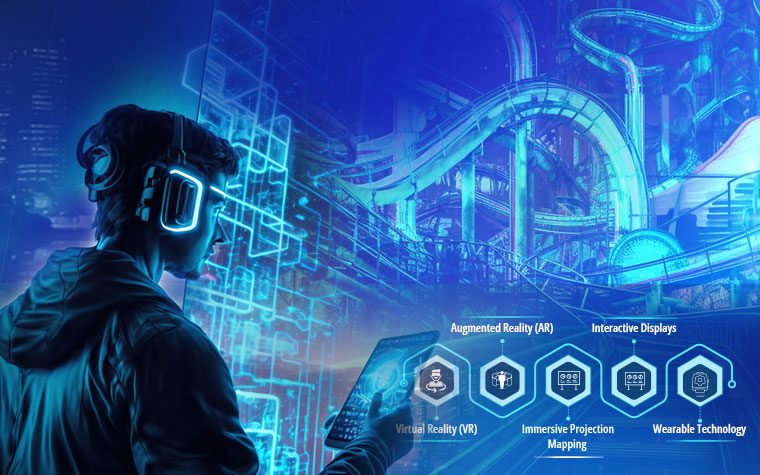
Leveraging Highly Immersive Technologies in Building Successful Theme Parks
The concept of theme parks has been around since the European Renaissance. These amusement parks, over time, began serving as a source of recreation where people could take a break from the monotony of their daily lives. In the 1950s, Disneyland became the first park centered around a specific theme, thereby paving the way and inspiration for several other theme parks. As technology continues to advance at a disruptive speed, customer-demands for seamless digital experience in every aspect of their lives, are also at an all-time high now. The same expectation can be witnessed in the case of theme parks, which are increasingly getting popular and competitive.
Theme Park engineering has come a long way since inception, and the incorporation of highly immersive technologies are now significantly contributing to this evolution. With the proper implementation of emerging technologies, it is possible to develop theme parks that exceed customer expectations besides improving park management significantly.
· Immersive Tech for Enhanced Customer Experience
Building a successful theme park requires all stakeholders to invest in cutting-edge technologies such as robotics, AI, intelligent motion control, and advanced wearables to offer a truly connected experience to the customer. Immersive technologies such as virtual reality (VR), augmented reality (AR), and mixed reality (MR) provide guests with an opportunity to experience a wide range of environments and scenarios that are not possible in the real world. In fact, several trend analyses show that customers prefer to visit theme parks that offer a virtual reality experience.
Here are 5 such immersive technologies that are driving a change and can continue to transform theme park engineering:
1. Virtual Reality (VR) – VR technology allows visitors to be transported to different worlds and experience things they may not be able to, in real life. For example, visitors can experience a roller coaster ride in a virtual world, providing a thrilling experience without the risks associated with a real roller coaster.
2. Augmented Reality (AR) – AR technology can collect real-time data about visitors thereby enabling theme parks to offer tailored personalized experiences based on individual preferences. Visitors can use their smartphones or tablets to view virtual characters or objects overlaid on the real world. This can make attractions much more interactive and engaging.
3. Immersive Projection Mapping – Immersive projection mapping technology can be used to create immersive displays, shows and truly dynamic virtual worlds that become interactive when paired with wearable tools, sensors, and software to detect motion, guest location and even the retinal movements. The interactions are primarily triggered by technologies, such as GPS, IR, and NFC (Near Field Communication). With the latest advances in this technology, it is now possible merge digital content with analog movement without any lag and provide a seamless experience to the visitors.
4. Interactive Displays – Interactive displays can be used to engage visitors and provide information about the park and its attractions. Touchscreens can be used to display maps, show schedules, and provide information about the rides.
5. Wearable Technology – Wearable technology like smartwatches and RFID (Radio-Frequency Identification) bracelets can be used to enhance the visitor experience in theme parks. Visitors can use their smartwatches to pay for food and merchandise, and RFID bracelets can be used to access certain areas of the park or participate in interactive experiences.
· Immersive Tech for Efficient Park Management
Immersive technologies can also increase the efficiency of park operations and maintenance. By using technologies such as AI and IoT, parks can optimize queue management, track guest behavior, and analyze data to make informed decisions about everything from staffing to ride maintenance.
Innovative immersive technologies are revolutionizing the theme park industry with the power to provide customers with unique and unforgettable experiences, personalization, and increasing operational efficiency. Thus, it is crucial for theme park designers and engineers to incorporate a proper blend of these technologies to stand out amidst competition and realize value.

